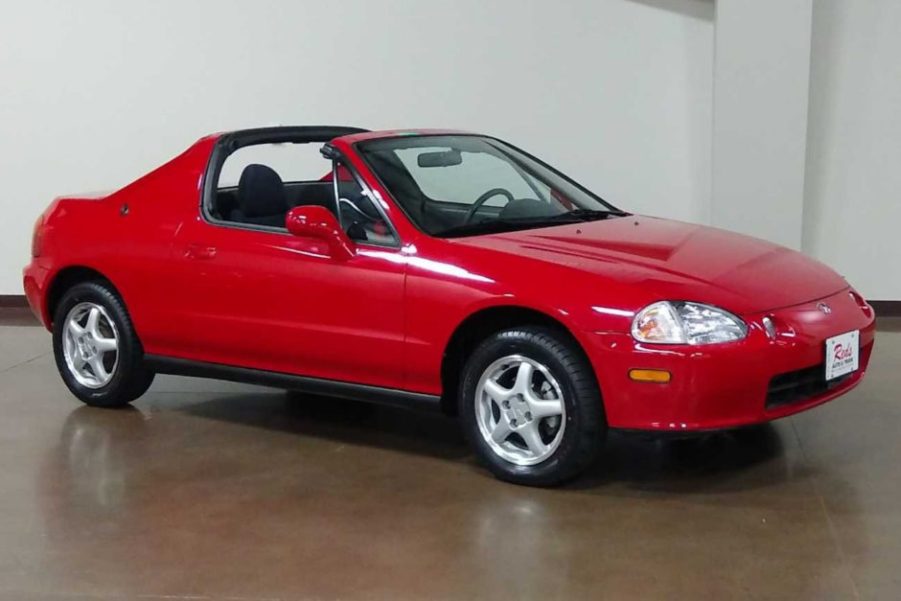
The Miata and Del Sol Rivalry
Ask an auto enthusiast what a good modern, small, lightweight, open-air, and affordable car would be, and they will probably tell you the Mazda MX-5 Miata. But that was not always the case. The Miata was introduced in 1989. Between then and now, there have been many other competitors. However, the Honda Del Sol was the only real competition.
Back in the 1980s, there was a race for auto manufacturers to provide budget-friendly, sporty, fuel-efficient, open-air feel vehicles. The Chevy Camaro, and Cavalier, Ford Mustang, were not hitting the consumers thirst for something smaller and more akin to the small Lotuses, Jaguars, MGs, and Triumphs of the 1950s, 1960s, and 1970s.

Fiero and MR2
Pontiac offered the Fiero for the 1984 model year. Toyota entered the segment with the MR2, also in 1984. Both were mid-engined offerings that sold well. These two models proved that the United States consumer was ready for this segment of vehicles. The Fiero was not a convertible. The MR2 had T-tops as an option. However, other manufacturers took notice of the consumer desire and made their own entries later, but not necessarily with a mid-engine configuration.

The Miata
Mazda took a different approach. Instead of a mid-engined configuration that would require a lot of re-engineering of their powertrains, for the 1989 model year, they would introduce the Mazda MX-5 Miata. It also was a two-seat vehicle, but it had a traditional front-engine. It was small. It was also a convertible. They could not make the Miata’s fast enough. Mazda immediately had a hit on their hands. Motortrend would write,
“The result is a car that’s pleasing for everybody from secretaries to off-duty race-car drivers.”

Diamond Star Motors
The Eagle Talon, Plymouth Laser, and Mitsubishi Eclipse were all stablemates that would take a stab at the same affordable, fun car market. Produced by a partnership between Chrysler Corporation and Mitsubishi, Diamond Star Motors would put out their models in 1990. They would have some success. However, they would not produce a convertible option until 1996, and they were 2+2 seating vehicles, not like the nimble little convertible two-seater that Mazda had.
Higher End
Eventually, BMW, Mercedes, and even Porsche would introduce their own renditions of the small convertible as well. But, their versions were geared for the more affluent buyer. Even with additional players in the game, Mazda seemed to have everybody beat. Its Miata was affordable for just about anybody. The base price was just under $14,000.00.

Civic Del Sol
Things changed when Honda waded into the pool of the affordable, open-air feel vehicle. The Honda Civic Del Sol was launched in 1993. As its name alludes, it was based on the existing Civic chassis, but with its own twist. The Civic Del Sol had a lightweight targa top and a traditional front-engine configuration. It also had a base price of $13,520.00. At that price point, the consumer suddenly had a valid competitor to the Miata, even if it was only a targa top instead of a full convertible. Additionally, the Del Sol was a front-wheel drive vehicle, which made it a little more all-weather capable than the Miata.
My father was one of those consumers unsure of which one to buy. He took my mother and I to a dealership that had multiple brands on a dealer campus, an “Auto Row”. Honda and Mazda were in side-by-side buildings. He would compare the Miata and Del Sol. Ultimately, he would choose the Del Sol because the Miata required additional money for the secondary hard-top option. The Del Sol’s targa was already a hard-top.

He would never regret his decision. He would take the targa top off every opportunity he could. The vehicle Del Sol would remind him of his old Triumph, in a more modern package. The car was good to him through curvy roads, rain, even light snow.
Del Sol Updates
Honda would update the Del Sol sporadically. Early years of the Del Sol had leakage issues around the targa top. A revision by Honda of the seals would change that. Also, it would be renamed the Del Sol, instead of the previous Civic Del Sol. Lastly, a concern with fog lights necessitated a change in the front bumper in 1996. But, otherwise, very few changes were made to the platform. Resultantly, the vehicle saw its last model year in 1997.
My father’s 1995 Del Sol never leaked from the top. So, he enjoyed the car thoroughly with no surprises. It would serve him for many years. It would have been passed down to the grandkids had the vehicle not met its end in the middle of a three-car sandwich.

End of the Rivalry
The Miata is undoubtedly a fun car in its own right. It is still being produced today. For decades it was named the highest selling convertible on the market. So, ultimately it won out against its competitors. But, for 1993-1997, the Del Sol gave it a run for its money and stole some customers along the way. In either case, it was good for the consumer to have options by having manufacturers trying to out-do each other.


